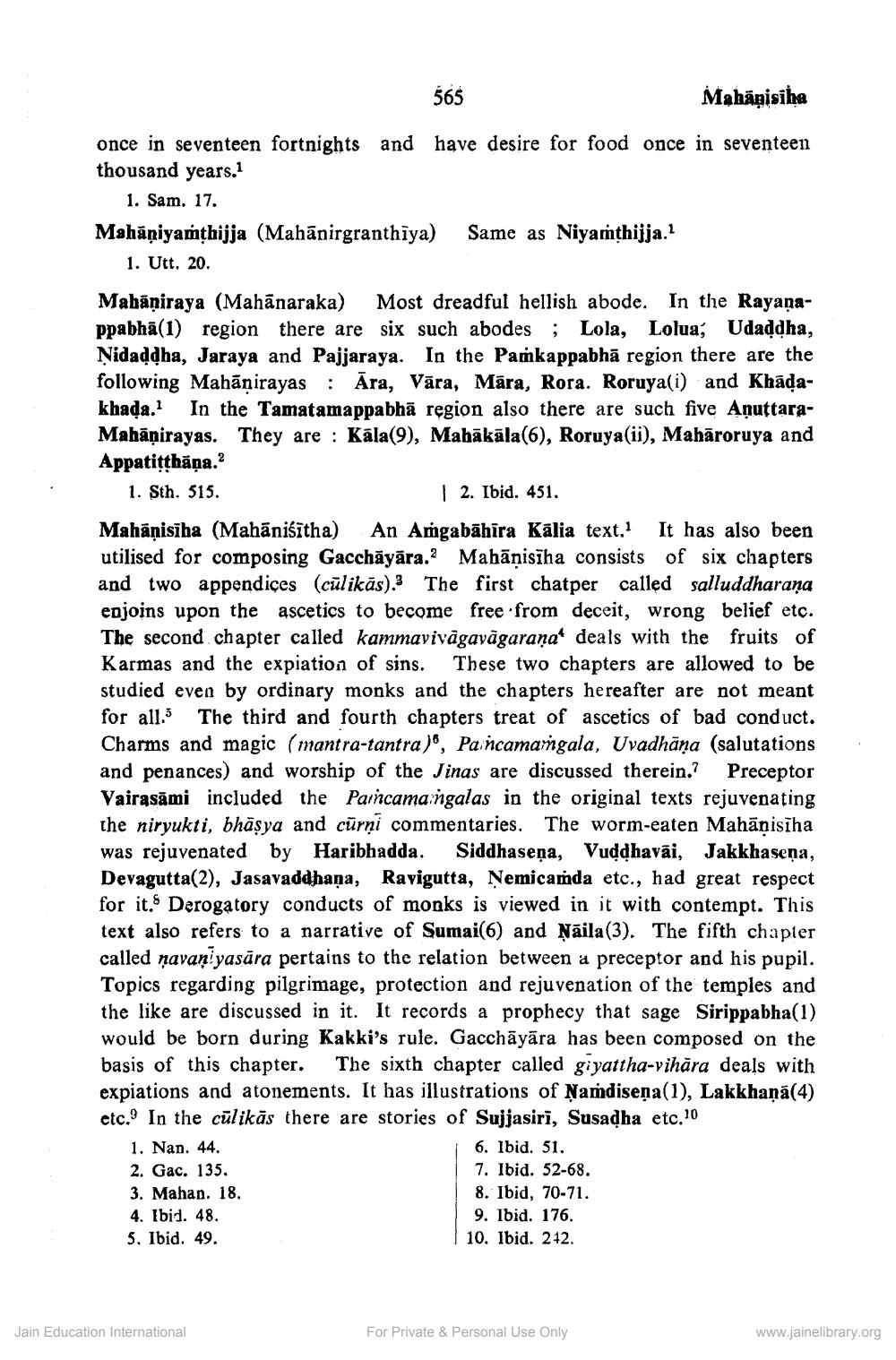________________
565
Mahānisiha
once in seventeen fortnights and have desire for food once in seventeen thousand years.1
1. Sam. 17. Mahāņiyamthijja (Mahānirgranthīya) Same as Niyamthijja.?
1. Utt. 20.
Mahāniraya (Mahānaraka) Most dreadful hellish abode. In the Rayaņappabhā(1) region there are six such abodes ; Lola, Lolua, Udaddha, Ņidaddha, Jaraya and Pajjaraya. In the Pankappabhā region there are the following Mahānirayas : Ara, Vāra, Māra, Rora. Roruya(i) and Khādakhada. In the Tamatamappabhā region also there are such five AnuţtaraMahāṇirayas. They are : Kāla(9), Mabākāla(6), Roruya(ii), Mahāroruya and Appatitthāņa.? 1. Sth. 515.
1 2. Ibid. 451. Mahānisība (Mahānisītha) An Angabāhīra Kālia text. It has also been utilised for composing Gacchāyāra. Mahānisīha consists of six chapters and two appendices (cūlikās). The first chatper called salluddharana enjoins upon the ascetics to become free from deceit, wrong belief etc. The second chapter called kammavivāgavāgaraṇa' deals with the fruits of Karmas and the expiation of sins. These two chapters are allowed to be studied even by ordinary monks and the chapters hereafter are not meant for all. The third and fourth chapters treat of ascetics of bad conduct. Charms and magic (mantra-tantra)', Paincamangala, Uvadhāna (salutations and penances) and worship of the Jinas are discussed therein.? Preceptor Vairasāmi included the Paincama:ngalas in the original texts rejuvenating the niryukti, bhāsya and cūrņi commentaries. The worm-eaten Mahānisīha was rejuvenated by Haribhadda. Siddhaseņa, Vuddhavãi, Jakkhasena, Devagutta(2), Jasavaddhana, Ravigutta, Ņemicamda etc., had great respect for it. Derogatory conducts of monks is viewed in it with contempt. This text also refers to a narrative of Sumai(6) and Naila (3). The fifth chapter called ņavan yasāra pertains to the relation between a preceptor and his pupil. Topics regarding pilgrimage, protection and rejuvenation of the temples and the like are discussed in it. It records a prophecy that sage Sirippabha(1) would be born during Kakki's rule. Gacchāyāra has been composed on the basis of this chapter. The sixth chapter called giyattha-vihāra deals with expiations and atonements. It has illustrations of Ņamdisena(1), Lakkhaņā(4) etc. In the cūlikās there are stories of Sujjasiri, Susadha etc. 10 1. Nan. 44.
6. Ibid. 51. 2. Gac. 135.
7. Ibid. 52-68. 3. Mahan. 18.
8. Ibid, 70-71. 4. Ibid. 48.
9. Ibid. 176. 5. Ibid. 49.
10. Ibid. 242.
Jain Education International
For Private & Personal Use Only
www.jainelibrary.org




